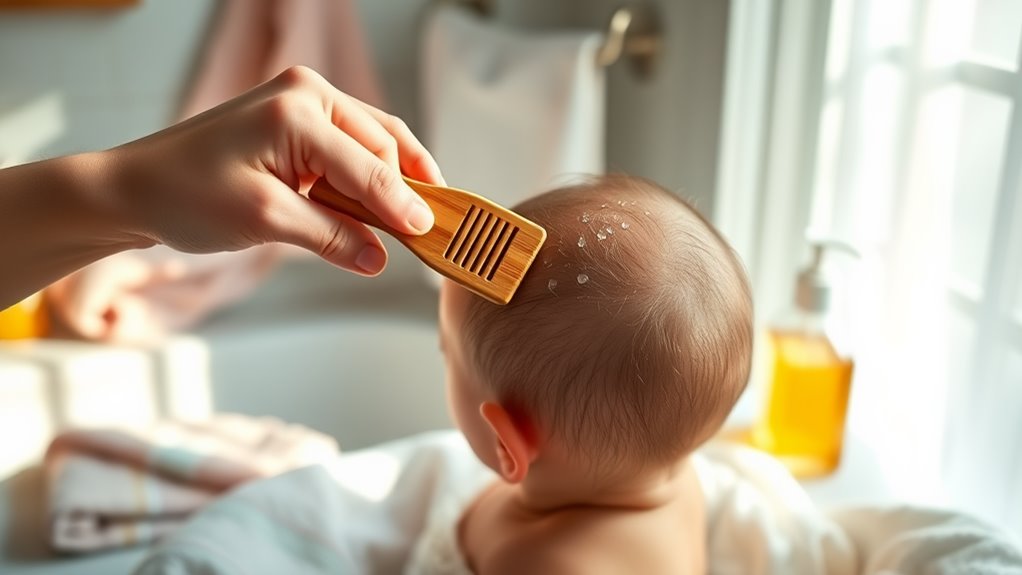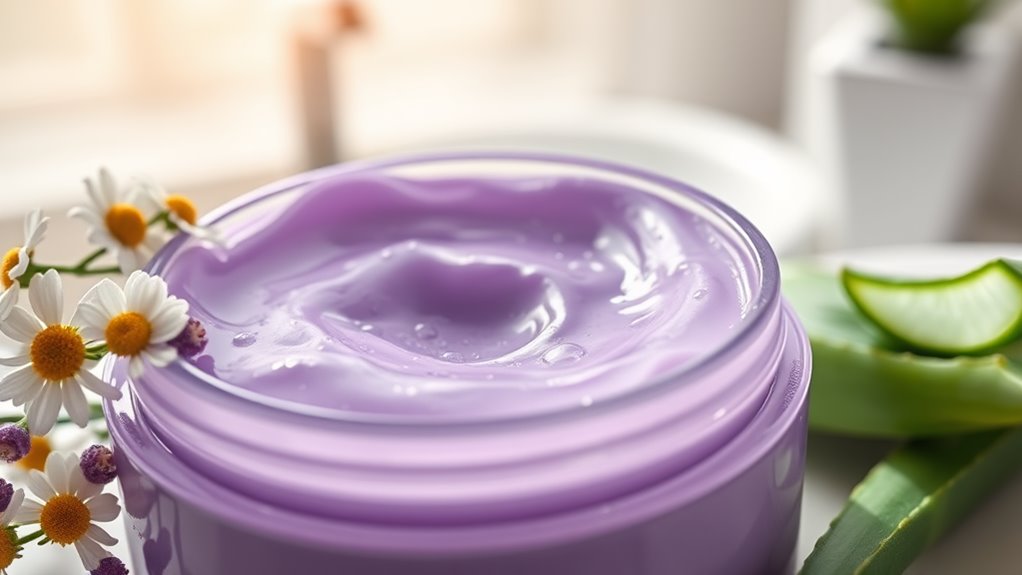Fix Cradle Cap at Home With This Gentle Solution
Understanding Cradle Cap: Causes and Symptoms
Cradle cap, or seborrheic dermatitis, is a common condition affecting infants, often causing flaky, yellowish patches on the scalp.
It’s typically harmless and can stem from factors like hormonal changes or overactive oil glands.
You might notice your baby scratching or rubbing their head.
Understanding these causes helps you choose effective cradle cap remedies, making your little one more comfortable as they grow.
Gentle Home Remedies for Cradle Cap
While cradle cap may look concerning, there are gentle home remedies that can effectively soothe your baby’s scalp. Try massaging a small amount of coconut oil or olive oil onto the affected area to soften the flakes. After a short while, use a soft brush or cloth to gently remove the loosened scales. Regular washing with a mild shampoo can also help maintain scalp health. Additionally, gentle methods like these are often recommended by pediatricians for treating cradle cap safely at home.
Step-by-Step Guide to Treatment
To effectively treat cradle cap at home, you’ll want to follow a simple step-by-step guide.
Start by gently massaging your baby’s scalp with natural oils like coconut or olive oil. Let it sit for about 15 minutes, then use a soft brush to loosen the flakes.
Finally, wash your baby’s hair with mild shampoo, rinsing thoroughly to remove any residue.
Tips for Prevention and Care
Preventing cradle cap and caring for your baby’s scalp can be simple with a few proactive measures.
Gently wash your baby’s hair regularly with a mild shampoo to keep the scalp clean. Use a soft brush to loosen any flakes without causing irritation.
Make certain your baby’s skin stays moisturized, and avoid using heavy oils that can clog pores.
Regular care helps prevent cradle cap effectively.
When to Consult a Pediatrician
Knowing when to consult a pediatrician about cradle cap can make a big difference in your baby’s comfort and health.
If the cradle cap worsens, spreads, or shows signs of infection—like redness, swelling, or oozing—it’s time to seek help.
Additionally, if your baby seems uncomfortable or if the condition persists despite your efforts, don’t hesitate to reach out for professional advice.




